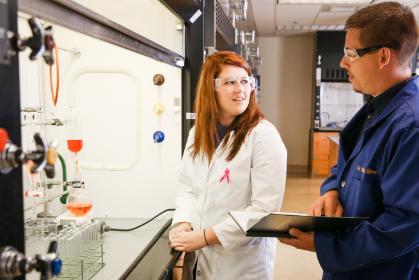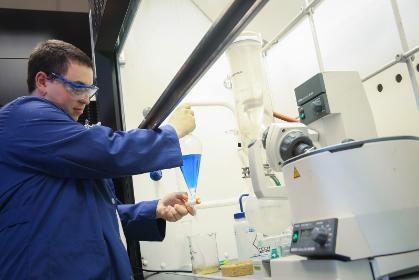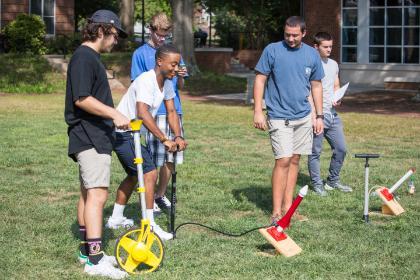

Engineering Physics
Prepare for a wide variety of technical careers with a Physics degree and an Engineering Physics Concentration from Longwood. Our program combines a broad liberal arts experience in Physics with practical engineering skills.
Designed for independent thinkers who want to develop their skills to create and innovate, the Engineering Physics Concentration applies physics problem-solving skills to engineering design problems that play an important role in shaping society and its future.
Career Paths
Graduate with a Longwood Bachelor’s Degree in Physics and be ready to compete for entry-level engineering jobs or for graduate engineering programs.
- Research and Development
- Education
- Military Service
- Military Contractors
Courses
Designed to give you fundamental training in Engineering and Physics, you'll take physics, mathematics, and chemistry courses.
ENGR 141 Foundations of Engineering
Introduces the engineering profession and its impact on society and the environment, including engineering problem-solving, the engineering design process, and professional practices. Covers fundamental engineering calculations, descriptive statistics, basic spreadsheet and mathematical scripting language applications, professional ethics, teamwork, and communication. Three 1-hour lecture periods. Prerequisites: MATH 164. 3 credits.
ENGR 402
This course is the first in a two-semester sequence that involves completing a design project using procedures used by professional engineers in design. The nature and scope of the project will be determined by the student in consultation with the instructor and depend upon the facilities available. In this first semester, students will produce a project management plan and a preliminary design review for the project to be completed in the second semester. Two 1-hour lecture periods and one 2-hour lab period. 3 credits. Pre-requisites: ENGR 141 and PHYS 370.
ENGR 403
This course is the second in a two-semester sequence that involves completing a design project using procedures used by professional engineers in design. In the second semester, student teams will produce a prototype or proof of concept and the results will be disseminated in a presentation and oral report. One 1-hour lecture period and two 2-hour lab periods. 3 credits. Pre-requisites: ENGR 402.




